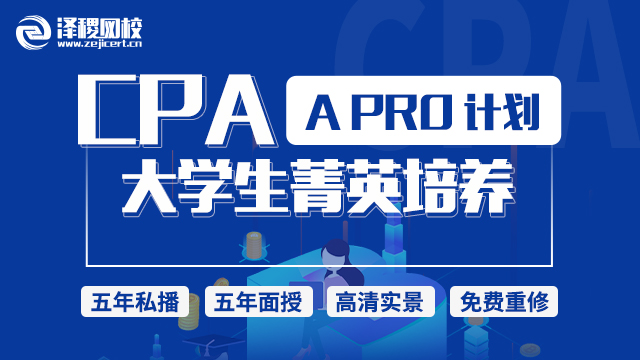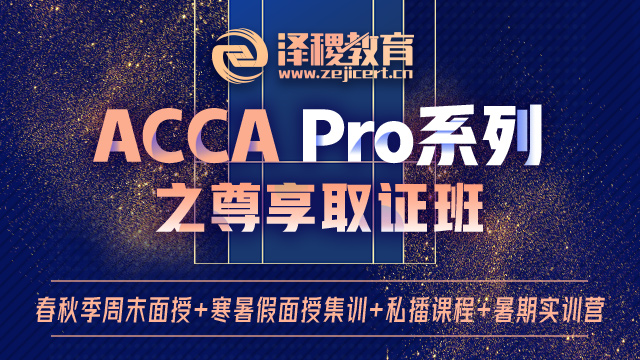F5 Performance Management:
Exam structure
Section A-15个客观题,每道题2分。曾经也有讨论说要不要每道题设不同的分值,从1至3分不等。但是最终还是设置成每个问题2分。
Section B-3个OT cases,每个case有5个问题,一个问题2分。
Section C-2个综合案例题,每道题20分。
Section A
考官强调说,考生不要忽略考纲上的任何一个知识点,每个知识点都很重要。因为在机考中多项选择题会以不同的形式出现,比如说:point and click,multiple correct option,fill in the blank,matching and pull-down lists.
Section B
每一个OT case会涉及到考纲中的一个重要的大知识点,虽然有时候也会涉及到考纲上一些别的小的知识点。同时,考官也强调说个别的OT questions虽然在这个case里,但是它是独立的。
Section C
是整个考试唯一的综合得分区。问题基本都是来自考纲的B,C或者D。一个综合题只会对应一个大的知识点。
在CBE机考系统中,回答Section C的综合题需要掌握基本的excel/spreadsheet的技能。考生需要复制、粘贴以及做一些基本的格式排版。同时,考生也要掌握简单的Excel公式,例如,加减乘除,求和等等。考官强调说,虽然markers能看到单元格里的公式,但是你的答案还是要填写清楚。在CBE机考中,考官还是鼓励大家的答案要清晰排版或者布局。(为了markers更快速的看清楚你的解题过程和答案)。再比如,一些计算的最后也需要一句总结。
CBE机考中的Section C还会用的文字处理功能(word)。建议考生在回答的时候去使用标题、重点标记符号和有框架的答题。到目前为止,从阅卷的情况来看,CBE考生使用word回答的答案要比笔试的考生整体来的清晰。考官相信是因为考生们的答案越来越精简。相比笔试,在机考中漏做或者不做题的情况少了很多。
考官还提醒考生们,在回答绩效管理(performance management)问题的时候尤其要注意不能仅仅停留在“这个目标以及达到”的层面——要去知道为什么,要问问自己你为什么要去算这个ratio。
考生在差异分析(variance analysis)这个问题上的表现一向比较薄弱。考官说她理解有好多方法可以计算出答案,但是markers比较推崇两种主要的计算方法。(就是老师上课讲的方法啊)
F5 in the future
考官透露说,学生将被期望使用电子表格分析信息。考生需要表达自己的理解,并提出建设性的意见。最后,她强调,机考的考试反映了系统计算大量数字的真实世界,今后会计师的行为更具顾问能力。
从现在开始,考生不会再被要求去画图了。但是,考生还是需要去解决一个图形问题或者用图形中获取信息的。
在Q&A环节中,考官还强调说,请广大考生不要低估了机考系统的准确性和严谨性。
强调:
我们发布本ACCA exam tips不是用来给你押题的,是汇总本次考试的重要关键信息。文中有部分知识点的整理,更重要的是考试答题技巧的汇总,以及考前准备。押题复习不可取,大家借助本文参考资深考官给出的考试答题技巧更加重要。
Kaplan
MCQ’s can come up from any syllabus area so cover the breadth of every topic.
Section A:
ABC,Life Cycle costing,Target Costing and Throughput Costing are very commonly tested topics while Environmental costing is rarely tested.
Section B:
Usually there are two questions from this area.Commonly tested topics are
–Relevant Costing
–Pricing
–Cost Volume Profit Analysis
–Limiting Factor
–Make or Buy or Shutdown Decisions and other Short term decisions
–Dealing with Risk and Uncertainty
Section C:
There are two questions from this area.Variances analysis is more commonly tested topics while Budgeting is also tested off and on.Every exam has some variances in it and could be basic or advanced variances.
Section D:
Performance evaluations is another area where questions always come up–very hard to learn a set method as each one is different.The important thing is to read the question carefully and make sure you link your analysis to the scenario.Commonly tested areas are
Transfer Pricing
Balance scorecard
The examiner does not like students who simply quote from the textbook,writing information that is not relevant to the question.The examiner also likes you to have an opinion–has the company done well or not?Clearly state your opinion and reasons why it is so.
LSBF
As any syllabus area could be tested in sections A&B the best advice is to study all areas of the syllabus.
For section C expect(but not limited to)planning and operational variance,mix yield variances&evaluation of the company performance(either as a whole or on a divisional basis)。
There is no longer any formal reading and panning time at the start of the exam.You are strongly advised to plan answers to section C questions before starting to write.Ensure to make reference to the scenario in your answer!
The exam is approx.40%calculation and 60%discussion–so doing the maths won’t be enough to pass this paper.Interpretation and application are crucial,especially in section C.
BPP
Sections A and B:Costing methods(ABC,throughput&lifecycle)and decision making(relevant costing,linear programming and uncertainty)。
Section C:Transfer pricing,budgeting and advanced variances.
点击在线咨询泽稷老师,ACCA中文宝典免费领,更有机会获得海量免费ACCA学习资料。





 白金级认可培训资质(总部)
白金级认可培训资质(总部)
 课程试听
课程试听
 职业规划
职业规划
 ACCA中文教材
ACCA中文教材
 考位预约
考位预约
 免费资料
免费资料




 题库下载
题库下载
 模拟机考
模拟机考




 CFA®成绩查询
CFA®成绩查询




 GARP协会官方认可FRM®备考机构
GARP协会官方认可FRM®备考机构





















